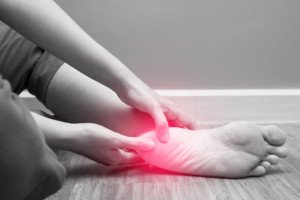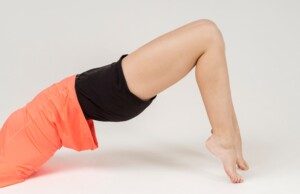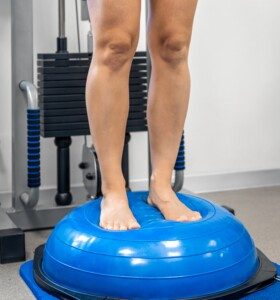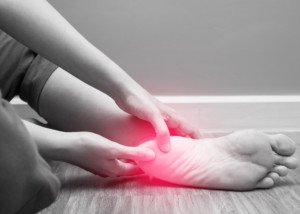
These exercises work for the heel pain from plantar fasciitis.
Heel pain from plantar fasciitis may be stubborn and persist, but the right exercises can actually reverse the condition; or, at least, result in substantial improvement with this painful heel condition.
Heel pain strikes athletes, fitness enthusiasts and people who don’t exercise, because risk factors for plantar fasciitis are varied and many.
“Plantar fasciitis usually occurs due to a posterior slippage of the heel bone (calcaneous) which causes a strain and consequently inflammation of the plantar muscles,” says Eugene Charles, DC, Diplomate of applied kinesiology and author of “Journey to Healing: The Art and Science of Applied Kinesiology.”
Heel pain can result from high heels or flat feet. Plantar fasciitis also can result from excess body weight.
Heel pain or plantar fasciitis can be brought on by running, hard walking and tight calf muscles.
Sometimes, the heel pain comes on for no apparent reason, though most likely, the sufferer has a risk factor he or she is not aware of, such as tight calf muscles or an improper walking gait.
Custom made shoe inserts are often recommended for plantar fasciitis, but they’re expensive and usually not covered by insurance.
Shoe inserts from shoe stores or drug stores don’t always relieve the heel pain of plantar fasciitis, either.
Neither do night splints, which aren’t cheap. If you’ve tried these, or are a recent victim of plantar fasciitis and nothing seems to help the heel pain, here are some marvelous exercises.
Exercises for the pain of plantar fasciitis
Walk up hills.
Yes, walk up hills. This forces the arch of the foot to stretch with each step. This stretching gets the heel involved.

Shutterstock/G-Stock Studio
The plantar fascia is a band of ligamentous tissue that extends along the bottom of the foot, from heel to ball.
Walking uphill will stretch this band. The pain of plantar fasciitis is mechanically caused by tight fascia.
The walking need not be strenuous. It can be slow and relaxed and done outdoors.
You can also use a treadmill, but keep your hands off the rails to maintain correct gait.
The last thing a person with plantar fasciitis and pain needs is to walk with an unnatural gait. In fact, an improper gait is a risk factor for this heel pain.
Walking up hiking trails is best because the surface of the trail causes the fascia to stretch every which way.
Pull toes towards your knee for one minute.
Release for at least one minute, then repeat four more times.
Three-Part Remedy
Dr. Charles explains, “A simple three-part remedy (barring any other factors) is to 1, Gently tap the back of your heel bone on the carpet before getting up three or four times to realign the bone; 2, Stretch out your calf muscles for one minute every morning, afternoon and evening, and 3, Roll a tennis ball under the bottom of your feet for five minutes when you are sitting every night.”
Strengthen the Calves
Don’t just do calf stretching exercises; do calf strengthening exercises.
Go up and down on your toes (wearing sneakers) to get a calf muscle burn, or use a calf-raise machine (gyms usually have these) set to light or moderate weight, and do 12-15 full range repetitions. Below are images showing more exercises for the calves.

Go up and down on your toes to engage the calves. Freepik

Go up and down on your feet while standing on a BOSU board. Freepik/pvproductions









































